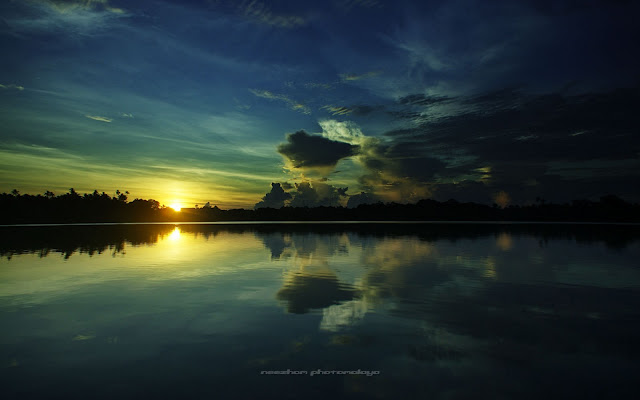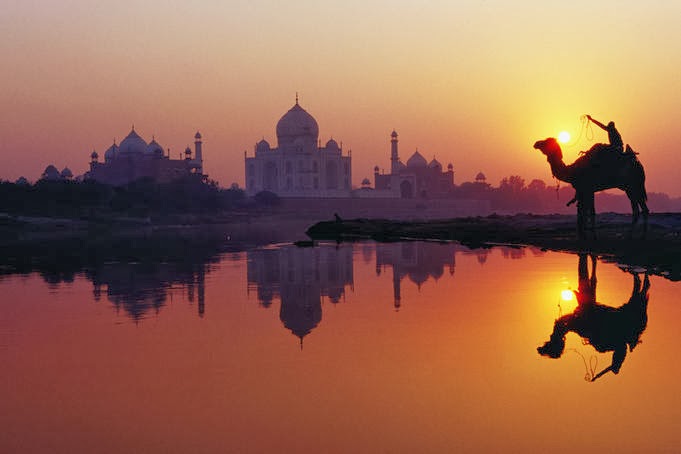 |
| http://www.pm-egroup.com/terengganu/ |
 |
Terengganu holds the charms and splendour from others state in Malaysia. Despite rapid development and modernization, it is as if time has stood still as the state retains all the rustic and idyllic charms so different from other tourist destination.
Terengganu is home to a diverse and close-knit society, where people are friendly and charm that exuberantly warmth and grace, with strong morals and values. People of different races share the bonds of neighborhood, a strong liking for local food and speak the same local dialect.
Besides, Terengganu is endowed with unmatched natural beauty. Having the longest coastline (244km) of wonderful beaches, the lush tropical rainforests, a hidden paradise unmoved by time and stunning islands with its tranquil emerald waters turn magnificently golden hues at the touch of the sun’s first rays. Terengganu is also rich with its customs and tradition, upheld through generations and visible in its way of life, its arts and handicrafts, its tradition culinary and its heritage. Terengganu is in a league of its own as a vibrant tourist destination.
The State today is a melting pot of old and news, set against the backdrop of Terengganu’s traditional poise and beauty, where progressive change is meshed with values that have dear for generation by the people.
Terengganu is truly a tropical gateway. In the land where nature embraces heritage, it will truly revitalize your senses. Welcome to Terengganu and discover splendours of nature, the diversity of tradition and the fascination of heritage. There is absolutely no place like Terengganu.
There were conflicting versions of how Terengganu got her name. Some correlated it to the finding of a canine tooth of an unknown origin at a river estuary by a group of hunters from a neighbouring state. So it was said that the place they went hunting where the “Taring Anu” was found. Some believed the name derived from a very bright rainbow (ganu) seen by a group of travellers and proclaimed the land to be “Terang Ganu” (Bright Rainbow). Furthermore the name Terengganu was mentioned as Teng-Ya-Nu by a Chinese scholar, Coo-Cu-Fei in his book Ling Wai Fai Ta in 1178AD. Another Chinese historian, Cao – Ju- Kua did not miss Teng – ya – nung when he authored Cu Fan Cih in 1226AD.
Teng-ya-nung was under the rule of Sri Vijaya Kingdom. Ptolemy corroborated that the East coast region of the Golden Chersonese (Peninsula Malaysia) had Kole and Primula. Both believed to be ports of call for costal traders. Kole was said to be in Kemaman while Primula was believed to be in Kuala Terengganu.
The Inscribed Stone (Batu Bersurat) found by Sayed Hussein Ghulam Al-Bukhari in 1902 at Kuala Berang bore the world Terenkanu inscribed in jawi, and Arabic Romanized version. The stone tablet also bore a date in Hijrah calendar which was equivalent t 1303 A.D. The archeological finds a Bewah and Taat caves in Hulu Terengganu were carbon dated to be from the Hoabin hian era circa 14,000 – 10,000 years ago. Terengganu was inhabited well before the turn of the first millennium.
Terengganu is truly a lessed state. It is in the early 1970’s that tourists start arriving. Unspoilt beaches, the wonders of watching giant leatherback turtles, the crystal clear azure waters, the splendours of marine lives and the untouched tropical rainforests are totally and experience to cherish. Even the uniqueness of its traditional foods are distinctively sought after and remains a part of Terengganu’s identity. Such as the ‘keropok lekor’ and ‘nasi dagang’ which truly shows originality and so famous that it is regarded as the trademark of Terengganu.
With the present government gearing ahead to create an impressive state to visit, an immense opportunity waits investors. Terengganu is mobilizing it’s full force in developing modern infrastructures.
All the required potentials, endless opportunities and fascination can only be found here in Terengganu.
Economy
The discovery of offshore oil in gas in 1974 has granted Terengganu a significant change to its economic, technology and social structure. At current production, the oil and gas reserves are estimated to last for another 13 years and 41 years respectively.
Terengganu has enjoyed considerable development over the past 30 years with its rapid industrialization and growing economic activity after the discovery of these reserves. Before this, farming and fishing were the main economic activities for the state.
Even so, 45% of its land is still covered by lush pristine forests and rivers also home for some very old
Malaysia traditional culture whose practices and customs have been handed down the generations. The 225 km of coastline is not only making Terengganu the state with the longest coastline in Peninsular Malaysia but also contributing to the state GNP. As a holiday destination, Terengganu is a neverending journey of discovery with its rich and exotic culture, breathtaking wonders of nature and endless
potential for adventure.
 |
Culture and Religion
Due to its history background and geographical location, Terengganu receives cultural influences from the neighbour in the north: Kelantan and Thailand. Though it is conservative Muslim state, the general public is still enjoying the freedom of worship. However, beer or alcohol is not widely available in certain places especially Malay own shops. Always remember that while n Rome, do as the Romans do.
 |
Working week
Most of the offices start the week on Sunday and the weekend falls on Friday and Saturday.
sources: http://www.pm-egroup.com/terengganu/





.jpg)
.jpg)
.jpg)



.jpg)
.jpg)
.jpg)
.jpg)










.jpg)



.jpg)
.jpg)



















